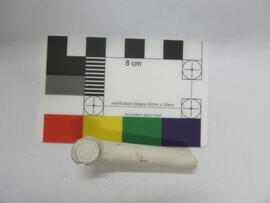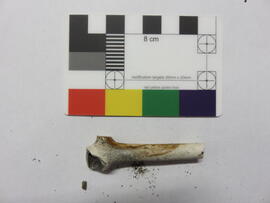Identity area
Reference code
Title
Date(s)
Level of description
Extent and medium
Context area
Archival history
Immediate source of acquisition or transfer
Content and structure area
Scope and content
A significant, although poorly stratified, assemblage of clay tobacco pipes (MNI 50) was recovered. The assemblage is predominantly 17th to 18th century in date, although at least one 19th century fragment is present. The assemblage is notable for the presence of six pipes with the initials IK; these were produced by James Kuquit of Cambridge who was active c.1713-50. Two of these have a stamped mark of a crown in relief, on the base of the heel; this particular combination has not been recognised previously. The presence of clay tobacco pipe in a context indicates a date of. c.1580+. Bowls have been categorised using the Oswald general typology (1975). Information on makers derives largely from Cessford (2001), although subsequent unpublished research has modified some of the identification and dating of manufacturers.




























